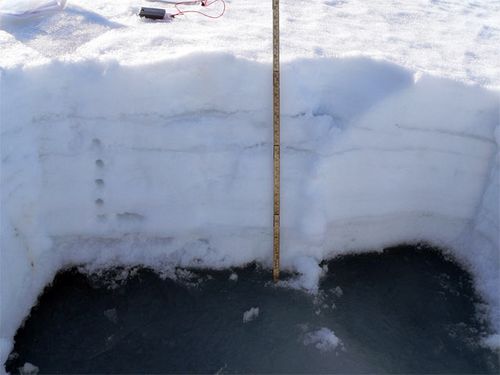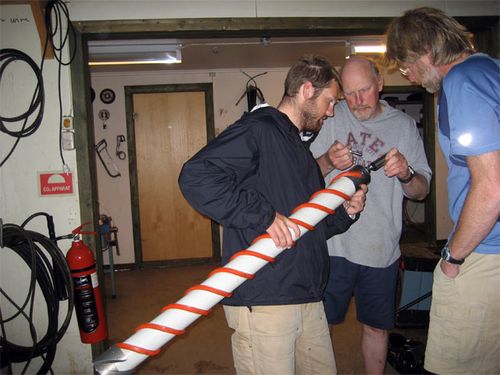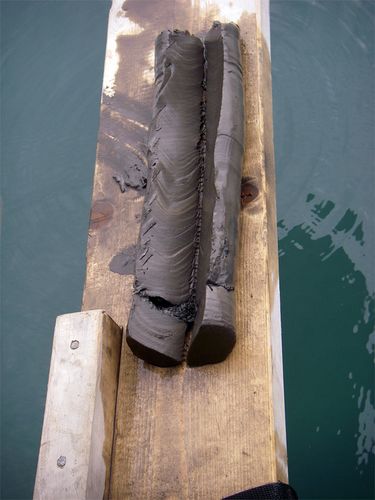With only 3 or 4 days left for field work it's time to assess what needs to be done so that everyone has their samples and/or data to take home. Today we divided into 5 teams instead of the usual 2 or 3. Al and Mike went with Anthony to a moraine near the Linne GlacierA mass of ice that persists for many years and notably deforms and flows under the influence of gravity. for quartzite samples for Anthony's project; Kristen and Emily went up the glacier to measure glacial ablation; Jesse and Leo went to a snowfield to dig snow pits for Jesse's project; Maya, Steve, and Antoine went up to Lake Kongress for short sediment cores and more samples for Maya's project; and Dave, Megan and I cored Lake Linne for Megan's project and for a core for me. Murphy's Law of Fieldwork says that what can go wrong will go wrong, and this has been the case with Jesse's project. It was decided that the best (accurate and efficient) way to sample the ice in the glacier would be to use a "power" corer. It's similar to having a large chain saw engine attached to a coring device. Getting it here is much easier said than done considering the closest corer to here was at UNIS in Longearbyen and Longyearbyen is a boat ride away. Our contact at UNIS assured us that we would have this corer a week ago, but because of numerous logistical issues it never arrived until this evening! I'm sure you've picked up on the fact that everyone helps everyone with gathering samples and data, and since arriving here at the field station, Jesse has been on everyone's team assisting wherever needed. Now it is our turn to assure that Jesse has his samples and we will help him however we can over the next few days. Stay tuned for the results of the ice coring operations!


Murphy has also visited those of us coring too. It took 3 attempts while on the windy lake to get a core for me. Grabbing sediment cores can be a challenge given the fact that the lake is deep and you can't see what's going on at the bottom of the lake. Dave has developed a knack for getting cores, and acquired a textbook quality 40 cm core for me to take back to my students. Megan needs 2 short cores to compliment the sediments she acquired from the sediment traps. After 3 attempts, finding a heavier rock to act as an anchor, we grabbed one core. After about 6 more tries for the second core we determined that the conditions on the lake were too rough for us to get the second core she needed. Maybe tomorrow will bring more success. Stay tuned for the results of the sediment coring operations!

Challenge of the day: What needs to be taken into consideration when designing an ice corer? What about for taking samples back to the United States?


Comments